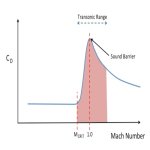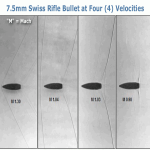Hey all,
I thought I'd start this thread after posting in another that I thought most people overstate the effects of the transonic zone.
I was hoping we could use this space to discuss long range 22lr shooting (300-600 yards +) and some of the things you guys see as challenges whether it be wind, velocities, ammo quality or design, the transonic zone etc.
Of course this conversation can vary with the intended purpose (practical style shooting vs utmost accuracy potential & groups). Feel free to discuss 1 or all questions below.
1) Do you guys see problems with accuracy due to transonic turbulence or is the wind and ammo quality a much bigger issue?
2) Has anyone witnessed bullets stable at 50 yards tumbling at 300+?
3) If ammo had the exact same level of initial accuracy, quality, consistency, BC etc, and the only difference was subsonic (say 1070 fps) vs supersonic (say 1435 fps) would you see the same accuracy at extended ranges? Or would one be better than the other and why?
4) Is wind the biggest factor or ammo consistency? We see a lot of wind in the prairies, so wind is always a factor.
5) How much are you guys seeing for vertical dispersion at extended ranges (300+) due to wind changes? And how to you compensate, or do you just rely on ballistic calculators?
6) Do you create custom profiles in your ballistic calculators? Or do you find they match up well at extended ranges, say 300 - 600 yards? What drag curves are you using?
7) Do you guys see 22lr accuracy as a bit of a crapshoot due to the rabbit hole of ammo and changing environmental conditions 1 month or even day apart?
8) For practical style shooting, is decent ammo good enough (eg CCI SV), or will only the best (eg Lapua) suffice?
9) What is your idea of acceptable accuracy at 300 yards, 1, 2, 3 MOA? And what so you feel is consistently achievable, 1, 2, 3 MOA?
10) What kind of ES/SD numbers are you getting?
Let's keep it civil and try to learn from other experiences. I will try to eventually update this initial post with more questions, ideas and consensus.
I thought I'd start this thread after posting in another that I thought most people overstate the effects of the transonic zone.
I was hoping we could use this space to discuss long range 22lr shooting (300-600 yards +) and some of the things you guys see as challenges whether it be wind, velocities, ammo quality or design, the transonic zone etc.
Of course this conversation can vary with the intended purpose (practical style shooting vs utmost accuracy potential & groups). Feel free to discuss 1 or all questions below.
1) Do you guys see problems with accuracy due to transonic turbulence or is the wind and ammo quality a much bigger issue?
2) Has anyone witnessed bullets stable at 50 yards tumbling at 300+?
3) If ammo had the exact same level of initial accuracy, quality, consistency, BC etc, and the only difference was subsonic (say 1070 fps) vs supersonic (say 1435 fps) would you see the same accuracy at extended ranges? Or would one be better than the other and why?
4) Is wind the biggest factor or ammo consistency? We see a lot of wind in the prairies, so wind is always a factor.
5) How much are you guys seeing for vertical dispersion at extended ranges (300+) due to wind changes? And how to you compensate, or do you just rely on ballistic calculators?
6) Do you create custom profiles in your ballistic calculators? Or do you find they match up well at extended ranges, say 300 - 600 yards? What drag curves are you using?
7) Do you guys see 22lr accuracy as a bit of a crapshoot due to the rabbit hole of ammo and changing environmental conditions 1 month or even day apart?
8) For practical style shooting, is decent ammo good enough (eg CCI SV), or will only the best (eg Lapua) suffice?
9) What is your idea of acceptable accuracy at 300 yards, 1, 2, 3 MOA? And what so you feel is consistently achievable, 1, 2, 3 MOA?
10) What kind of ES/SD numbers are you getting?
Let's keep it civil and try to learn from other experiences. I will try to eventually update this initial post with more questions, ideas and consensus.
Last edited:












































































